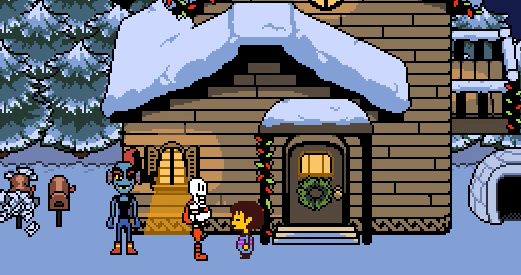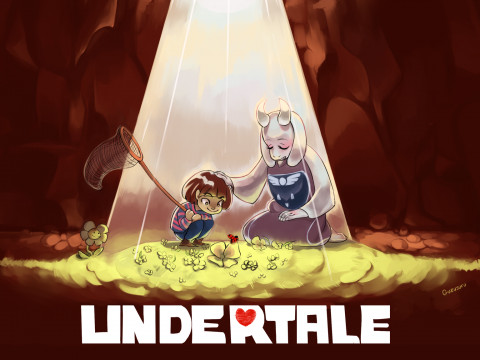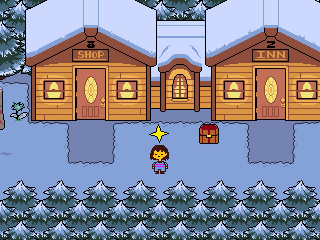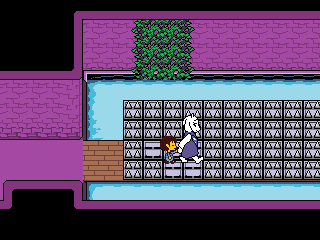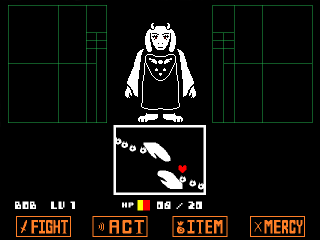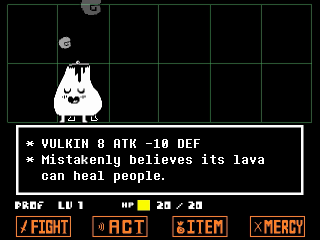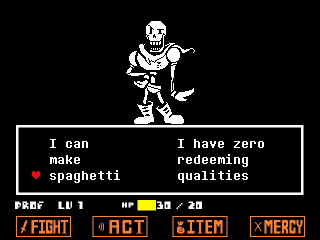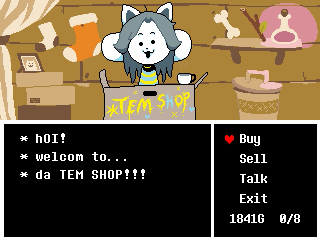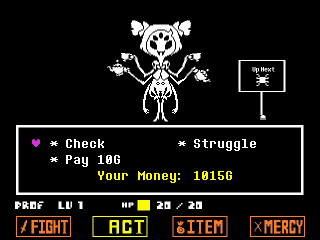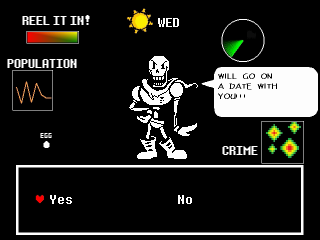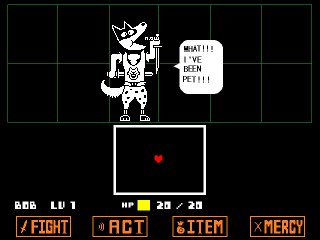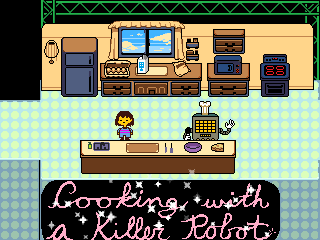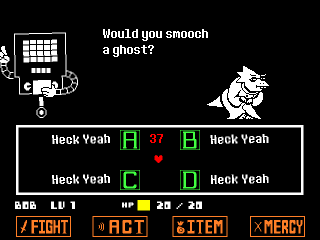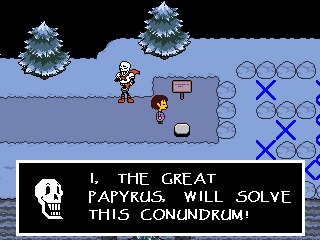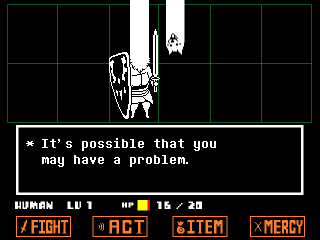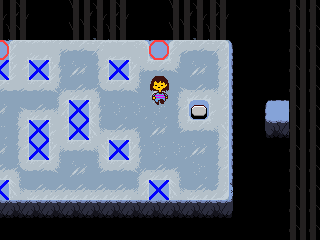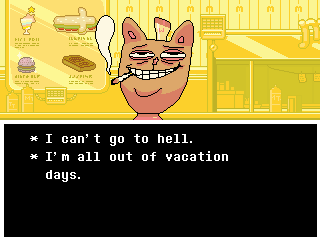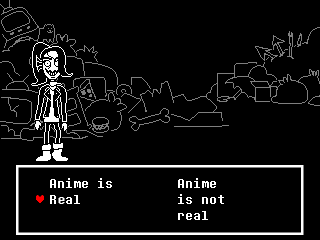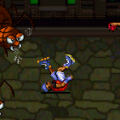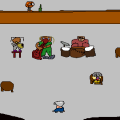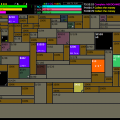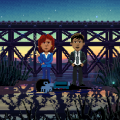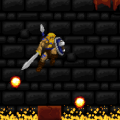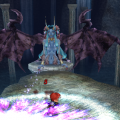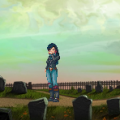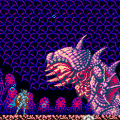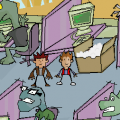As video games have slowly begun to mature as a medium, we’ve seen more and more games start to examine themselves, the way we interact with them, and the things they expect us to do. As the medium has matured, we’ve seen more games bring into question elements that we often take for granted. For example, take the 2012 shooter, Spec Ops: The Line. As a cover shooter, a genre where you’re generally pushed to murder tons and tons of people, the game criticizes you for doing the only possible thing you can do to make any progress. Other, more independent productions explore similar things, some being more subtle about it than others. Undertale, it could be said, is the RPG equivalent of Spec Ops in some of the themes it explores, while taking a very different approach in style.
It might be easy to dismiss Undertale as another game that has one message that’s pounded into your head repeatedly, but that’d be a real disservice to it. Sure, the messages are easy to find, even through the game’s tagline: “The Friendly RPG Where Nobody Has To Die”. But despite that, there’s some real substance in the game itself, and the game is honestly so well done that playing the game any way but peacefully, as the developer intended, is pretty tough to do. The dialogue is often hilarious, the battle system is engaging any way you decide to play the game, and at no point does the game ever feel pretentious or self-important.
Many years ago, humans and monsters lived together on Earth, until war broke out between the two races. Eventually, the humans were victorious, sealing the monsters deep underground beneath a magical barrier. Eventually, in the year 201X, an androgynous human child climbs the mysterious Mount Ebott, despite the legends that those who scale it never return. They end up tripping and falling into the mountain itself, trapped in the underground realm of the monsters, who have created their own society since their imprisonment. The child soon learns that an exit out of the underground waits at the castle of the king of the monsters, leading them on a long journey through the underground. The monsters, however, are eager to get their hands on the human’s soul, which has the power to break the barrier that’s been trapping them for so long…
As far as RPGs go, Undertale is actually fairly linear. There’s no overworld to deal with, meaning that the entire game takes place on one continuous path. Of course, you’ll come across the occasional town on your journey, as well as side areas that might contain places to buy things or more NPCs to talk to. Aside from that, however, the way ahead is always pretty obvious to figure out, and there’s rarely any need to backtrack at any point. While there are a few puzzles along the way, none of them get too difficult, meaning that more of your time will be spent moving forward, chatting up NPCs and poking into everything as you progress.
Random encounters put you in a first-person view, somewhat like Earthbound or Dragon Quest. The human is only capable of one kind of attack, which initiates a quick timing minigame whenever it’s used. A bar moves across a meter, and when the closer the bar is over the center of the meter when you hit the button, the more damage you do. That’s generally about it when it comes to dealing damage, although certain weapons will let you tap the button to get in a little extra damage. You won’t have access to magic or such, although your main attack is generally effective enough that no enemy feels like a slog to kill.
It’s when enemies attack that things get far more interesting, however. Every enemy attack opens up a box on the screen, in which a heart, representing your soul, is at the center. Enemies will use attack patterns against you, and you have to maneuver your heart around the screen to avoid them. Getting hit by bullets, barks, flexing muscles, tears, or whatever else they put out against you will reduce your HP. If you encounter more than one enemy at a time, they’ll even combine their attacks, giving you something especially tricky to weave your way through. It’s a very interesting concept, overall, and since every enemy uses their own unique patterns, it makes every type of monster a unique experience.
While hitting your enemies until their HP hits zero is one way to defeat them, the game shows you other options you can take early on. You can beat down an enemy until they’re near death, and then spare them to remove them from the fight. If you select the ‘Act’ option during a battle, however, each type of enemy has a few actions you can perform on them instead of attacking. The trick is that doing certain things on each type of enemy will eventually make them uninterested in fighting. Once that happens, you can ‘Spare’ them, non-lethally removing them from the fight. While you won’t get any EXP from spared enemies, they’ll still drop gold that can be used to buy armor and healing items. Almost every enemy can be spared, and due to the way the game is set up, it’s always in your best interest to try and do so.
There’s a pretty wide variety of monsters, as well, all of which vary wildly in how they attack and how to spare them. Early game monsters can be sent off with as little as a compliment. As you progress, however, enemies grow tougher in their ways to spare them, as well as upgrading their attack patterns. One monster becomes a lot more sociable when he’s the only one left in the battle. Or you might have to get into a flexing contest with another monster type, which will require you to dodge multiple rounds of its toughest attack. Picking the wrong options, however, can make monster attacks tougher to avoid, while certain monsters have multiple ways of sparing them. The toughest solutions give higher rewards, as well as generally brightening the lives of the monsters you encounter.
The bosses are just as interesting as well, and they’ll often change up the usual battle mechanics entirely. One boss will activate gravity on your heart, forcing you to platform over the attacks he sends your way. Another freezes you in place, tossing spears towards you, forcing you to rotate a shield around your heart to block the many projectiles that come towards you. Even the boss encounters can be spared, if you can survive their attacks and figure out just how to outsmart, outlast, or escape from them. It’s definitely more a challenge, since no EXP means no leveling up, which means no increases to your maximum HP. Aside from a few particular fights, though, the game is usually never too rough. Healing items are pretty easy to get a hold of, as long as you’re careful not to waste them, and save points refill your HP.
There’s a few different ways to play through the game, all of which have their own unique things to see. Being pacifist means not slaying a single monster, no matter how hard they might try to kill you. This can be the most difficult way to play the game, given that you’re always at minimum HP. The benefits, however, are that by playing this way, you’ll eventually show the monsters you’re not as bad as they might have thought. Enemies will appear later in the game as friendly NPCs to chat with, who often get some pretty hilarious lines of their own. Some of the bosses will even let you visit them after their non-lethal defeat, getting some extra scenes with them that elaborate on who they are. Generally, every NPC, even the most minor of encounters, are so likeable and goofy that it’s hard not to feel awful for even killing one of them.
Killing monsters, however, begins to shift the game’s tone ever so slightly. Monsters that might have appeared later in the game will be conspicuously absent, and other monsters will begin to wonder about their disappearance. It can lead to a somewhat lonely trek towards the end of the game, and certain characters won’t be afraid to call you out on your choices. Killing bosses will permanently remove them from the story, and the ending you get will account for who survives to the end of the game. The reactions from some of the characters when they learned you’ve killed their friends can be genuinely heartbreaking. If that somehow isn’t enough for you, however, you can go even further.
Much like you can go through the game without slaying a single monster, the option remains for you to not let a single one survive. This route involves wandering an area for every possible random encounter and killing every single one. It’s pretty much impossible to do this by accident, as the game forces you to grind every encounter until literally nothing remains. Should you encounter a boss while you’re on this route, they’ll typically be cut down in a single hit. Entire areas of the game will be left desolate, their inhabitants attempting to flee from your approach. Whoever is left may condemn you for what you’ve done, while others will hold out a faint hope that you might be able to become a good person again. Somehow, it ends up being incredibly heartwrenching, and there’s no shame in resetting your save and starting again before it’s too late.
It’s hard to say what it is that makes this particular route so difficult to take to completion. It definitely pulls no punches, there’s nothing ever petty about the sort of things you do in this run. There’s no simple threatening or bullying, you simply take the life of everything that dares cross your path, and the inhabitants of the world are perfectly aware of this. The worst part, however, is that there’s certain story elements and even two boss fights that are exclusive to this route. There are exclusive things that you’re never going to get to see unless you systematically destroy this entire world that’s been built up. The game is very aware of this.
On a lighter note, should you restrain your murderous urges, the game’s quirky sense of humor is pretty hard not to giggle at. One early area makes you traverse a snowy forest full of literal guard dogs, all of which can be distracted from their attempts to kill you just by petting them. There’s an uncountable number of moments that could easily be classified as the “best” moment, from a character who thinks that a word search is a brilliant trap, or a boss that literally makes you type out with your physical keyboard what you think the best part of him is during his battle. The tone isn’t always comedic, and there’s quite a few heartwarming and horrifying elements you’ll encounter, as well. None of it feels out of place or tonally off, however, and it all helps to make the characters you encounter all the more memorable. It leads to something that’s constantly tugging at your emotions, able to make you feel to the point of crying to giggling yourself, sometimes even at the same time.
Visually, the game takes after Earthbound a lot, even as simply as the way the main characters are drawn. The graphics aren’t especially fancy, but they’re all functional, and the black and white monster sprites are particularly stylish. The soundtrack, however, is fantastic, and more than enough great tracks that the soundtrack is worth picking up, as well. Most of it is NES-style chiptunes mixed in with synth instruments, which combine together surprisingly well. If there’s any particular highlights in the soundtrack, it’d be the music that plays for the final battles, including a return of one of the creator’s previous works, “Megalovania”.
Overall, Undertale is a game where everyone who plays it is probably going to take away something different from it. There’s no doubt it does a spectacular job at stirring emotions, even with its simple graphics and usually goofy tone. It’s definitely a game that leaves an impression, which might explain the game’s massively positive reaction that it enjoys. While the games that have inspired it are definitely obvious, the game manages to do things that no game like it has ever done before. Even for those who don’t typically enjoy JRPGs, for whatever reasons they may have, it’s a game that’s definitely worth the experience.
Links:
Undertale Official Website.
Undertale Soundtrack – Bandcamp Official Soundtrack.
